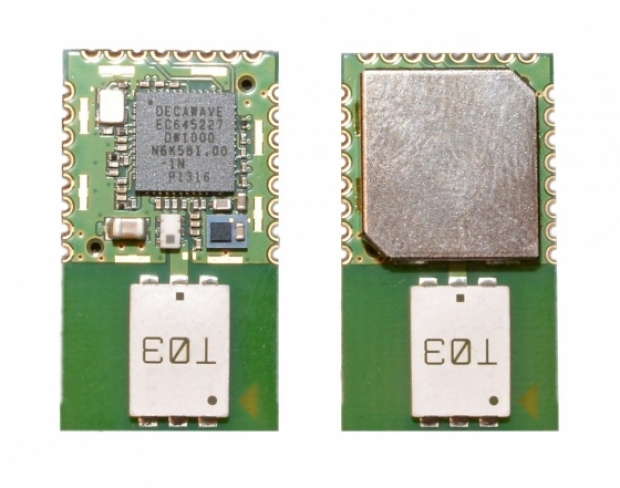DecaWave designs indoor RF transceivers and communication based on pulsed UWB wireless. In June, the company announced it had closed a funding round from "Angel" investors that brought its total funding since its formation in 2004 to $30 million and now it wants another $10 to $20 million.
Mickael Viot, marketing manager of DecaWave, told EE Times that the cash would be used to create multiple chip design teams working in parallel and to address application-specific versions of its generic micro-location technology.
DecaWave's first chip, the ScenSor DW1000, is a CMOS ultra-wideband RF transceiver IC based on the IEEE 802.15.4a standard that supports data rates of 110-kbps, 850-kbps, 6.8-Mbps, and 27-Mbps.
Currently it is made for DecaWave by TSMC in 90nm CMOS and 6mm by 6mm QFN package. It uses 3.5GHz to 10GHz frequencies and provides an accuracy of +/-10cm and peak current consumption of about 120mA.
Such chips can be used in beacons and objects and when multiple distances are measured from beacons with known locations that can be used to triangulate an object's position.
All this becomes important with the IoT where micro-location applications will become important. Billions of objects will be embedded with UWB transceivers to enable security and to provide additional functionality.
Decawave has come up with a car key fob to provide an additional layer of security by only allowing a radio source that is close, to open the vehicle. This is scheduled to appear in 2017.




